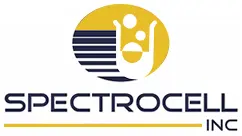What is Content?
Time to Read: 2m 10s
Are you sick of reading thinkpieces about content? Because I sure am. Think about that for a second: I'm a writer and I'm sick of reading blog posts with titles like this: "Content is KING!" "Ten Reasons Why Content is NOT King" "If a Tree Falls in the Woods and Nobody is Around to Hear it, Does it Still Generate Content for Your Site?" (Ok, I didn't actually read a post with that last title, but trust me, that is where the blogosphere is headed.)
 BEFORE. This is a page with words on it.[/caption] [caption id="attachment_3256" align="aligncenter" width="300"]
BEFORE. This is a page with words on it.[/caption] [caption id="attachment_3256" align="aligncenter" width="300"] AFTER. This is a page with well-organized copy, written by Ecreative copywriters (aka me).[/caption] Look at the AFTER screenshot. You can tell, at a glance, exactly what this website has to offer. This is the difference between "stuff" and "good stuff."
AFTER. This is a page with well-organized copy, written by Ecreative copywriters (aka me).[/caption] Look at the AFTER screenshot. You can tell, at a glance, exactly what this website has to offer. This is the difference between "stuff" and "good stuff."
Look, people, it's time to stop this endless debate over the value of content when we seem to only have the vaguest notion of what content is, exactly. So for now, we're going to chuck the concept of content entirely -- entirely! -- and get back to basics. The number one rule you should adhere to is this: put good stuff* on your site. Relevant stuff. If your stuff is not good or relevant, people will ignore you. Now that you're committed to only putting good and relevant stuff on your site, let's get specific about what kind of stuff you should focus on.
Copy
Your site probably has some words on it. Those words describe what your business does and how your business does it. But are these words interesting to read? Will users find them helpful? Are they spelled correctly? It's not enough just to have words on your site. Your words need to be arranged in a way that is enticing, informative, and syntactically correct. Also, using headers to break up the copy can make it easier to read, and help users find what they are looking for. Check out the following screenshots to see the difference between words and well-organized words. [caption id="attachment_3255" align="aligncenter" width="300"] BEFORE. This is a page with words on it.[/caption] [caption id="attachment_3256" align="aligncenter" width="300"]
BEFORE. This is a page with words on it.[/caption] [caption id="attachment_3256" align="aligncenter" width="300"] AFTER. This is a page with well-organized copy, written by Ecreative copywriters (aka me).[/caption] Look at the AFTER screenshot. You can tell, at a glance, exactly what this website has to offer. This is the difference between "stuff" and "good stuff."
AFTER. This is a page with well-organized copy, written by Ecreative copywriters (aka me).[/caption] Look at the AFTER screenshot. You can tell, at a glance, exactly what this website has to offer. This is the difference between "stuff" and "good stuff."




